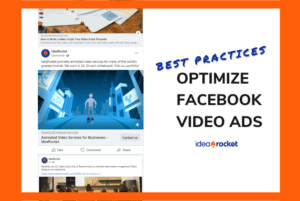Social video can be a powerful tool for promoting your brand. Here’s a look at the latest updates on some of the most popular social media networks, and what companies should consider when implementing their social video strategy though the rest of the year (and beyond!)
Vertical Video Takes Off With TikTok
Vertical video has been on the rise for years now, as mobile becomes a preferred way for viewers to consume content. While Instagram, Facebook, and Snapchat led the charge, emerging social media platform TikTok took the vertical video trend to new heights over the last year — and captured the hearts of the mobile-native Gen Z population.
The short-form video app has garnered more than 1 billion downloads globally since its initial launch in late 2017. In 2018, download rates vastly outperformed Instagram, whose live IGTV platform launched earlier that year.
TikTok is reminiscent of earlier predecessor Vine, which was shut down by parent company Twitter in 2016. Now, Vine founders are working on reviving the platform, this time, as Byte, which is still in beta today.
Snapchat Makes A Comeback
Though TikTok took the stage earlier this year, vertical video pioneer Snapchat saw new success after a sluggish period of growth and a controversial app redesign that angered its fanbase back in 2018.
In 2019, increased focus on consumer engagement helped Snapchat regain its footing. New products, including interactive games and investment in “Discover,” its branded long-form offering, helped parent company Snap, Inc. see stronger earnings and increased daily users into Q2. In August, the company unveiled the latest version of its Spectacles product — this time, with 3D viewing experiences and sleek new design.
Live Streaming Takes The Stage
For Facebook, Instagram, and LinkedIn, live streaming was front and center. Instagram expanded its AR capabilities for its Stories service, and its long-form streaming product IGTV turned one year old, with several bumps (and murmurs of monetization opportunities) along the way.
LinkedIn also launched live video streaming capabilities in February 2019, opening up opportunities for companies to provide new types of thought leadership content on the predominantly B2B social networking platform. LinkedIn first launched its native video capabilities in 2017, and has since expanded their product to accommodate paid social video promotion on company pages.
Top Social Video Trends Dominating 2019
As the major social media platforms continue to refine their toolsets, how are companies adopting their strategies to accommodate these new trends? Here are some strategies to keep in mind into the rest of 2019 and beyond:
Dynamic Video
Dynamic video allows brands to create highly personalized video content. By making the video about the viewer, and not the brand, consumers feel more connected and incentivized to engage and share their own personal stories.
1:1 Video
Account-based marketing, or ABM, is a growing trend among B2B companies. This strategy takes a more personalized approach to connecting with prospects on a 1:1 or one-to-few level. In this case, product or educational explainer videos are created to speak directly to a targeted audience, with content that addresses their unique needs.
Fireside Chats And Q&As
Live video brings the power of broadcast to the social media space. For brands, hosting a fireside chat, a live Q&A, or giving a “behind-the-scenes” tour of a live event can help brings audiences into the moment with a more authentic feel.
Educational Videos
Educational videos have always been a popular medium. Now, companies are embracing them in new and creative ways by creating robust video series, dedicated channels on YouTube, webinars, and educational platform experiences meant to foster long-term engagement and community among viewers.
Video Ads
When it comes to paid social, more personalized experiences call for more personalized ad targeting. On Instagram, for example, brands are now able to place paid ads and prompt CTAs directly into its Stories tool, allowing users to explore and purchase products in-platform.
The bottom line
Advances in social media have made reaching audiences with video easier than ever before. As you consider your social video strategy, note how each platform promotes your content. That way, you can activate the right types of storytelling in a way that’s the most impactful to your audience.
What do you think of the recent social video updates? Let us know on Facebook, Twitter or Linkedin!




